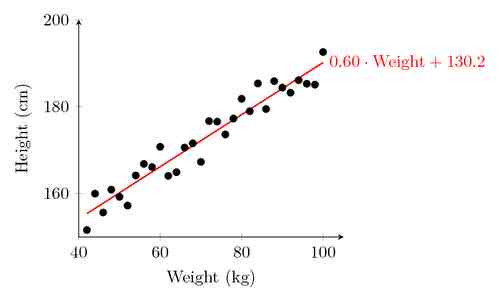Matrix Transpose Calculator
Instructions: This is a matrix transpose calculator with steps. All you need to do is to provide a matrix \(A\) by typing its values below.
Modify, if needed, the size of the matrices by indicating the number of rows and the number of columns. Once you have the correct dimensions you want, you input the matrices (by typing the numbers and moving around the matrix using "TAB")
Number of Rows = Number of Cols =More this matrix transpose calculator with steps
Often times the idea of matrix transposition is presented in different contexts. As we have seen often, matrices are very useful at solving linear systems, where the equation coefficients are represented by the rows.
In some cases, it could be useful to consider the coefficients represented by the columns, for which the transposed matrix come in handy.

How do you find transpose of matrix?
As usually in mathematics, there will be a way of defining the transpose using symbols. Let's try that first. Consider \(A\) and given matrix, with size \(m \times n\) (so then, it has \(m\) rows and \(n\) columns).
The transposed matrix, \(A^T\) will be a \(n \times m\) matrix (with \(n\) rows and \(n\) columns), defined as follows:
\[ A^{T}_{ij} = A_{ji} \]So, the element that is in the coordinate \((i, j)\) of \(A^T\) (this is, row i, column j) is the same as the element of \(A\) that is in the coordinate \((j, i)\).
In the end, this is a fancy way of saying that the rows of \(A^T\) are constructed using the columns of \(A\). Plain and simple.
So it is super simple, and you have to following these steps:
- Establish the matrix A you want to transpose
- Identify the columns of the matrix A
- Form the transpose matrix by using as rows what you identified as the columns of A
The procedure to find the transpose of matrix
What we found above gives us a procedure to find the transpose of a matrix easily.
Step 1: Identify and list the columns of the given matrix, and list them.
Step 2: Use those columns you found in Step 1 as rows of a new matrix. That new matrix is your \(A^T\). Done.
What is the transpose of a 2x4 matrix?
Going to the nitty-gritty, the transpose of a 2x4 matrix is a 4x2 matrix. You need to get the 4 columns of the original 2x4 matrix given, and use those to set as rows in the 4x2 transposed
What are symmetric matrices?
The idea of symmetry of matrices is strongly linked with the transposition of matrices. Indeed, it is said that a matrix \(A\) is symmetric when \(A^T = A\).
So then, symmetric matrices are those which remain unchanged after transposing them. So one way to assess whether or not a matrix is symmetric is by computing its transpose and comparing it to the original matrix .

Transposing is the only operation you can do to matrices?
Absolutely not! Matrices are versatile objects, and much like numbers you can add matrices, subtract and multiply matrices, and even in some cases you can divide matrices (provided that they are invertible).
Matrix transpose example
Question: Consider the following matrix
\[ A = \begin{bmatrix} \displaystyle 2&\displaystyle \frac{1}{3}&\displaystyle 1\\[0.6em]\displaystyle 2&\displaystyle 3&\displaystyle 1\\[0.6em]\displaystyle 1&\displaystyle 2&\displaystyle 4 \end{bmatrix} \]Compute the associated transpose matrix \(A^t\).
Solution: Notice that we the size of the given matrix is \(3 \times 3\), so then the size of the transposed matrix is \(3 \times 3\)
The transpose of a matrix \(A\), which we call \(A^T\), is formally defined component by component, as shown by using the formula
\[ A^{T}_{ij} = A_{ji}\]In other words, the element that is in the i-th row and j-th column of the transpose matrix is the same as the element that is in the j-th row and i-th column of the original matrix \(A\).
Therefore, the i-th column of the given \(A\) matrix corresponds to the i-th row of the transposed matrix. So in order to compute the transpose of a matrix \(A\), we just take its columns and we make them the rows of the transposed matrix. So we get:
\[ A^T = \begin{bmatrix} \displaystyle 2&\displaystyle \frac{1}{3}&\displaystyle 1\\[0.6em]\displaystyle 2&\displaystyle 3&\displaystyle 1\\[0.6em]\displaystyle 1&\displaystyle 2&\displaystyle 4 \end{bmatrix} ^T = \begin{bmatrix} \displaystyle 2&\displaystyle 2&\displaystyle 1\\[0.6em]\displaystyle \frac{1}{3}&\displaystyle 3&\displaystyle 2\\[0.6em]\displaystyle 1&\displaystyle 1&\displaystyle 4 \end{bmatrix} \]which concludes the calculation of the transpose \(A^T\).
<


